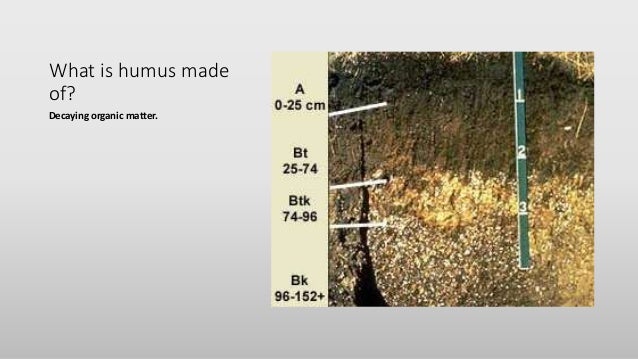Weathering Erosion And Soil Study Guide Answerkey
- Weathering Erosion And Soil Study Guide Answers
- Chapter 7 Weathering Erosion And Soil Study Guide Answers 7.1
Read and Download Weathering Erosion And Soil Study Guide Answerkey Free Ebooks in PDF format - THE METAMORPHOSIS STUDY GUIDE ANSWERS HOLT SPANISH 3 WORK EXPRESATE ANSWER.
File Name: Size: 4295 KB Uploaded: - This page is frequently updated and contains information about the book, past and current users, and the software. This page also contains a link to all known errors in the book, the accompanying slides, and the software. Since the solutions manual is distributed electronically, all known errors are immediately fixed and no list of errors is maintained.
Instructors are advised to visit this site periodically; they can also register at this site to be notified of important changes by email. (read: privacy policy). Archives of A scholarship is money given to pay or offset school bills and lower the number of student loans you need. The quantities can range from only a few dollars to an all hen type. This latter one is often referred to as a full experience. The counseling workplaces of most high faculties will have a guide that lists the more average scholarships out there. Under are descriptions of a few of the most often used sources.
Many organizations be glad about scholarships through the local school methods. This is a way for a company to inspire scholars to look at topics relevant to that organizations business. A few of these scholarships are free however others have a stipulation of working for that particular business upon a hit of entirety of experiences. This is a type of student mortgage, as you need to pay off it by working off the debt.
Study Guide Worksheet – Chapter 7 Section 7.1 – Weathering True or False 1. Weathering is the process by which rocks on or near Earth’s surface break down and change.
The removal and transport of weathered materials from one location to another is called erosion. Weathering must take place before erosion. The repeated freezing and thawing of water in the cracks of rocks is called frost wedging.
Water, oxygen, carbon dioxide, and acids are significant agents of mechanical weathering. Circle the letter of the choice that best completes the statement or answers the question. The process by which outer layers of rock are stripped away is called: a. Chemical weathering c. Exfoliation b.
Frost wedging 7. In which of the following climates would physical weathering most readily occur? Wet and warm c.
Wet and hot b. Dry and warm d. Dry and cool 8. Which of the following factors does NOT exert pressure on rocks that leads to physical weathering?
Plant roots c. Freezing water b. Overlying rocks d. Carbonic acid Use the terms below just once to complete the passage. Water Acid precipitation Carbonic acid Carbon dioxide Temperature Mechanical Composition Pressure The process by which rocks and minerals break down into smaller pieces is (1) weathering, also called physical weathering.

Two factors that play a significant role in this type of weathering are (2) and (3). To some extent, the (4) of rocks determines the effects that chemical weathering will have on them. (5) is an important agent in chemical weathering because it can dissolve many kinds of minerals. An atmospheric gas that contributes to the chemical weathering process is (6) , which is produced by living organisms. When this gas combines with water, it produces a weak acid called (7).
Another agent of chemical weathering is (8) , which is caused mainly by emissions of sulfur dioxide and nitrogen oxides. Study Guide Worksheet – Chapter 7 Section 7.1 – Weathering (Continued) 1. What climate conditions promote chemical weathering? What rock type is most easily weathered? How is surface area related to weathering?
Weathering Erosion And Soil Study Guide Answers
How does slope affect the rate of weathering? Section 7.2 – Erosion and Deposition For each item, write the letter of the matching item. The final stage of the erosional process in which materials are dropped in another location a. Slope 2.
The force that tends to pull all materials downhill b. Ocean waves 3. The steeper the , the greater the potential for flowing water to erode earth materials c. Wind 4. Coastal areas undergo erosion by and wind. Glaciers 5. Erode by scraping, gouging, and picking up large rocks and debris piles e.
Gravity 6. A major erosional agent in areas with limited precipitation and high temperatures f. Deposition Give two examples of how plants and animals move Earth’s surface materials from one place to another as they carry on their life processes. Study Guide Worksheet – Chapter 7 Section 7.3 – Formation of Soil Complete each statement. is the loose covering of weathered rock particles and decaying organic matter overlying the bedrock of Earth’s surface. Soil that is located above its parent material is known as. Soil that has been moved away from its parent bedrock is called.
Chapter 7 Weathering Erosion And Soil Study Guide Answers 7.1
When heavy machinery digs out soil in the process of building a road, a vertical sequence of layers of soil, called a(n) , will often be exposed. A distinct layer, or zone, located within a soil profile is known as a(n). Soils formed at high latitudes and high elevations that have good drainage but no distinct horizons are classified as. A(n) is any one of various types of soil that can support a forest, grassland, prairie, or other environments.
Soil found in areas with less than 25 cm of rainfall that often have a high accumulation of salts are called. Soil forms as a result of and biological activity that breaks down and changes soil materials over long periods of time. The relative proportions of particles sizes make up a soil’s. Soil is the measure of how well a soil can support the growth of plants.